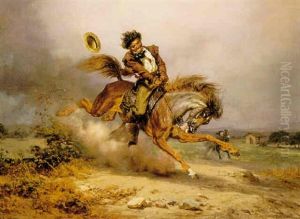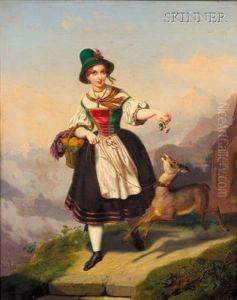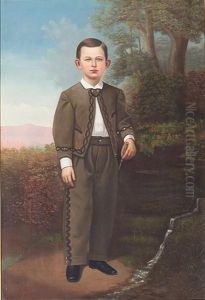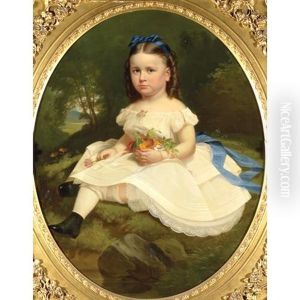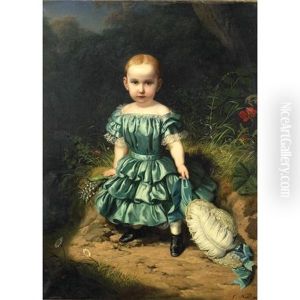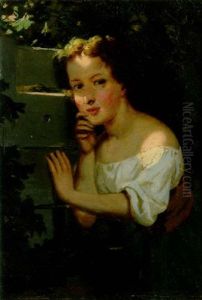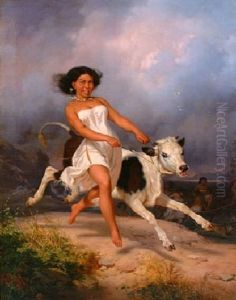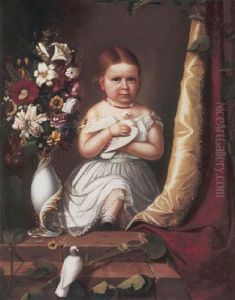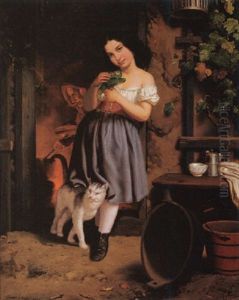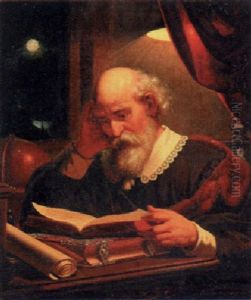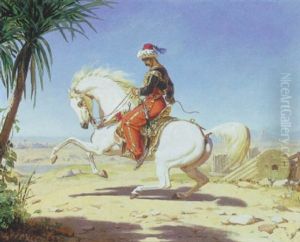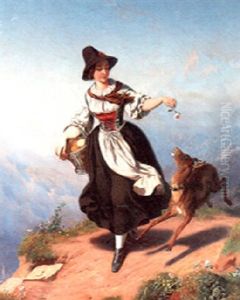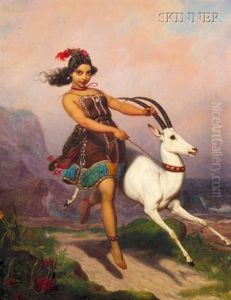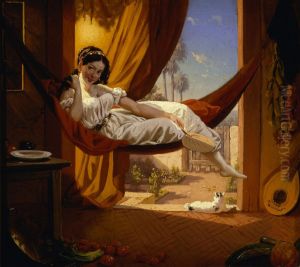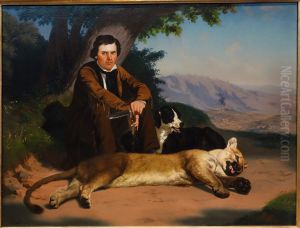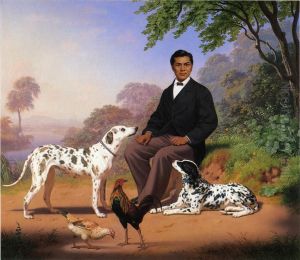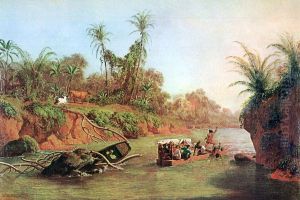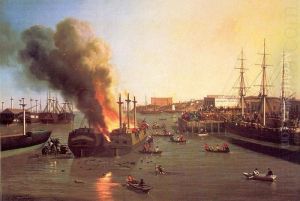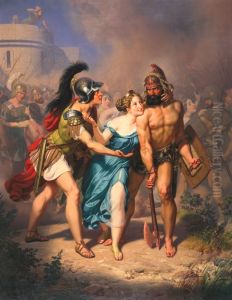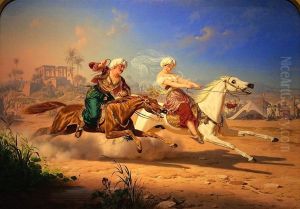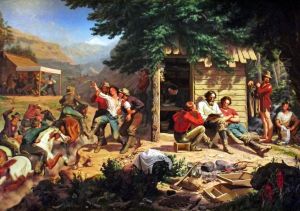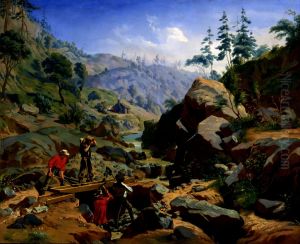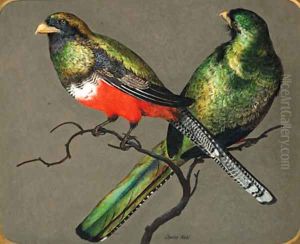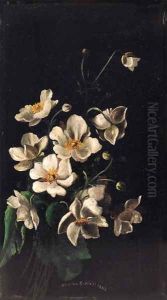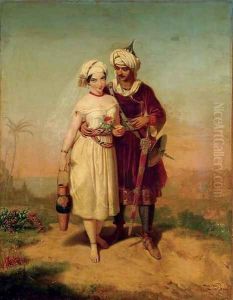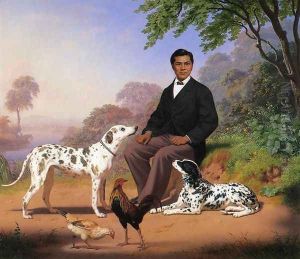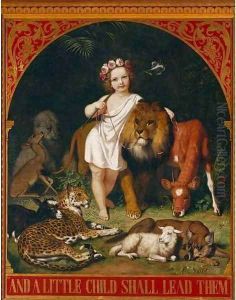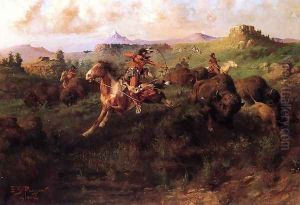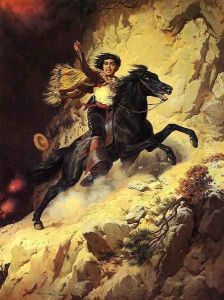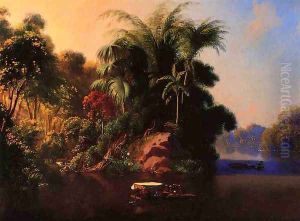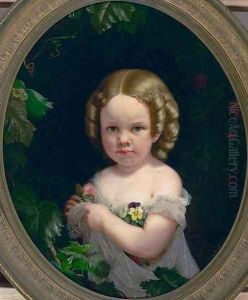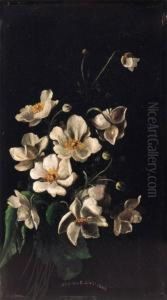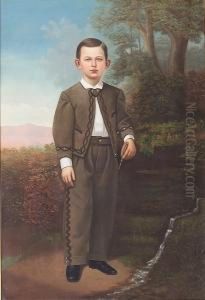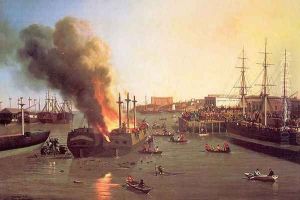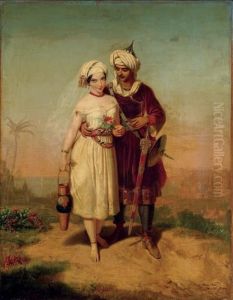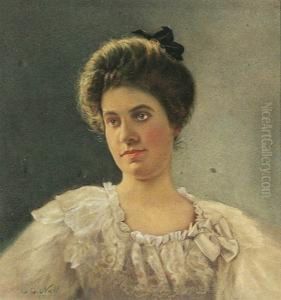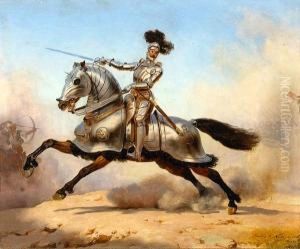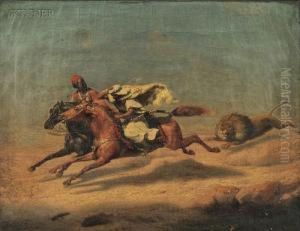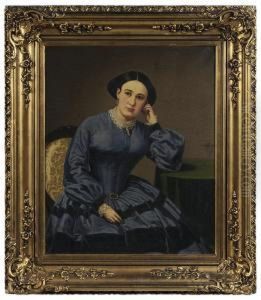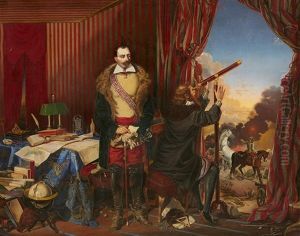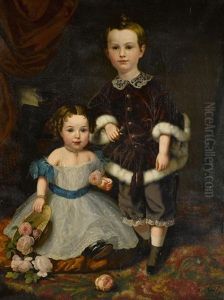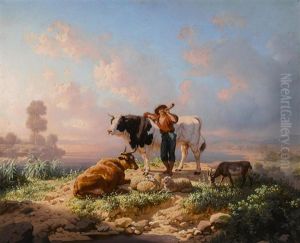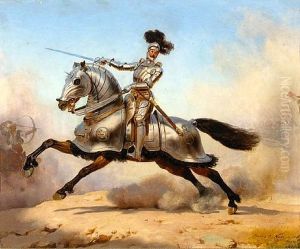Charles Christian Nahl Paintings
Charles Christian Nahl, also known as Carl Christian Nahl and often called the 'California Hogarth' for his series of satirical works, was a German-born painter who became one of California’s premier historical genre artists during the 19th century. Born on October 18, 1818, in Kassel, Germany, Nahl was part of an artistic family; his father was a court painter. He received his early training from his father and at the Kassel Academy.
Influenced by the revolutions of 1848, Nahl left Europe and moved to Paris and later to New York. Eventually, he migrated to California in 1851 during the Gold Rush period, which significantly influenced his artistic direction. In California, Nahl's work began to reflect the rugged lifestyle and the dramatic historical events of the era.
Nahl is particularly known for his collaboration with his brother, Arthur Nahl, and together they produced illustrations and artworks that captured the spirit of the frontier. His most notable works include 'Sunday Morning in the Mines' (1872), which vividly portrays the chaotic and rough life of miners. Nahl’s attention to detail and his ability to capture the raw emotions of his subjects won him acclaim.
Throughout his career in California, Nahl engaged in various forms of art, including printmaking, illustration, and painting. He created several iconic images that have become synonymous with the California Gold Rush. Nahl’s works are considered an integral part of the visual history of California and are valuable for their historical and artistic significance.
Charles Christian Nahl died on March 1, 1878, in San Francisco, California. His legacy lives on through his contributions to the art of the American West and the detailed historical records his works provide. His paintings remain on display at various institutions, including the Crocker Art Museum in Sacramento and the Oakland Museum of California, where they continue to be studied and appreciated for their cultural and historical value.
